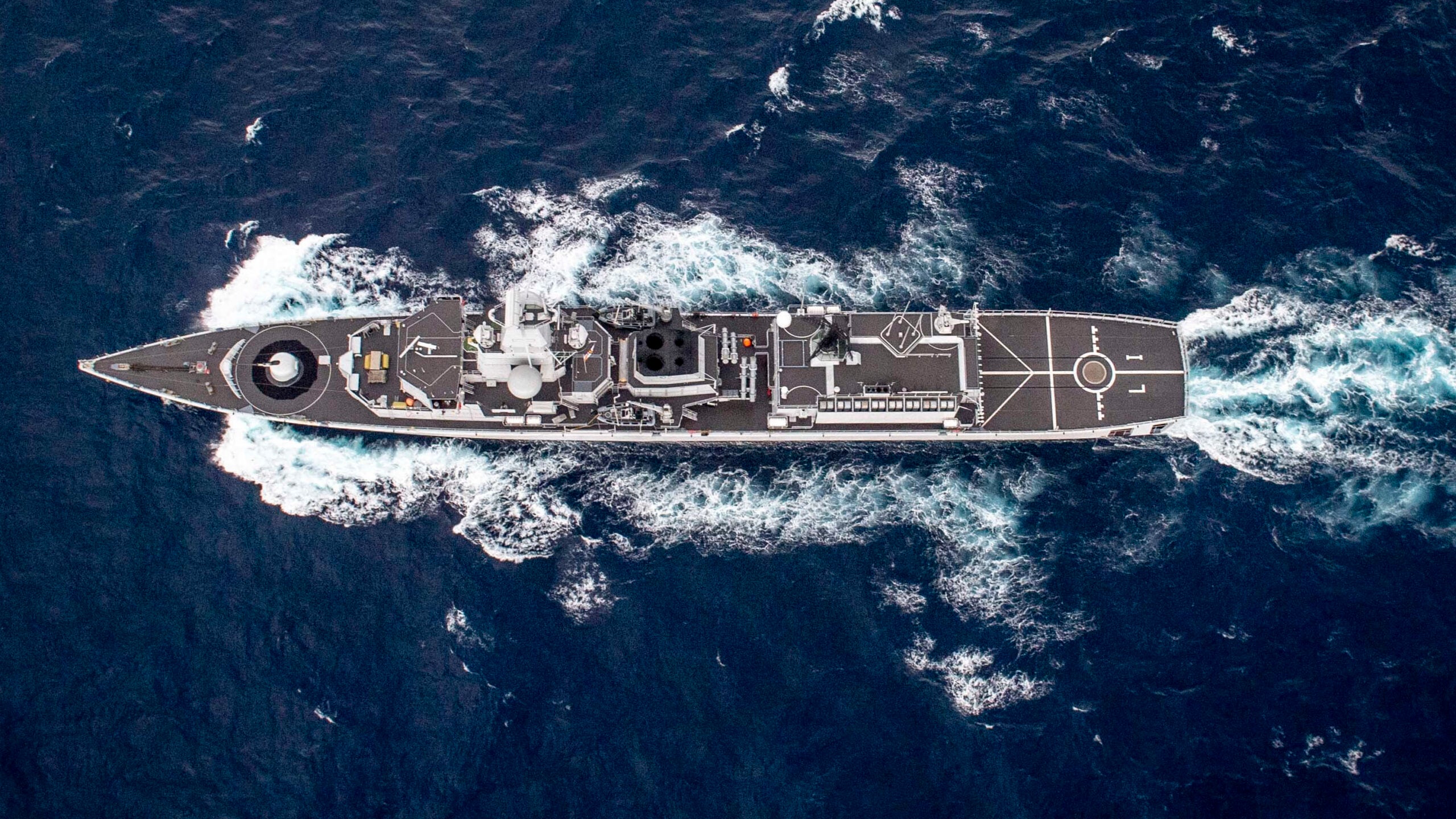Ship tracking software shows that the Belgian Navy’s Karel Doorman class frigate Leopold I sailed around the area where an Israeli-owned cargo ship, the Hyperion Ray, was reportedly the victim of an attack in the Gulf of Oman earlier today. That incident, which remains unconfirmed, follows a recent attack on Iran’s Natanz nuclear site, as well as one earlier this month in the Red Sea on the Iranian cargo ship M/V Saviz, which is widely understood to be a covert mothership operated by that country’s Islamic Revolutionary Guard Corps, or IRGC. Israel has been accused of carrying out both of those attacks.
The exact nature of the attack on the Bahamian-flagged Hyperion Ray remains unclear and there have been no reported casualties. The Times of Israel reported that it “came under missile fire.” Citing “Hebrew media reports,” the same source claimed that Israeli officials believe Iran was responsible for the attack.

The Times of Israel also noted that Israel’s Channel 12 news channel reported the missile — or drone — strike caused only minimal damage to the ship, which was en route to the UAE from Kuwait. Two “maritime security sources” told the Reuters news agency that the attack resulted in an explosion on board the ship. An unnamed spokesperson for the Hyperion Ray refuted that there was any damage and said the ship continued on its route.
Still, the appearance of the 3,320-ton-displacement Leopold I sailing around the last known position of the Hyperion Ray ahead of the reported attack, close to the port of Fujairah in the United Arab Emirates (UAE), does add additional evidence that some kind of incident did happen. This frigate is currently assigned to the European Maritime Awareness in the Strait of Hormuz (EMASOH) mission, which aims to ensure safe passage for commercial ships in these strategically vital waters.
So far, no one has claimed responsibility for any attack on Hyperion Ray and there is no official confirmation of any incident from the ship’s owner or operator, or Israeli officials. If an attack did occur, it would certainly be in line with an expanding spate of tit-for-tat clandestine operations between Iran and Israel directed primarily at the countries’ respective commercial shipping activities. It is particularly notable that the Helios Ray, a sister ship of the Hyperion Ray that is owned by the same Israeli company, was also the victim of a reported attack earlier this year in the Gulf of Oman.

The reported attack on Hyperion Ray also comes just days after a mysterious attack on Iran’s Natanz nuclear site, which officials in Tehran have described as an act of “nuclear terrorism” and blamed on Israel. Exactly what happened at Natanz remains unclear, with some reports suggesting a cyberattack was responsible for damage that cut power to the facility, including underground centrifuge banks where Iranian authorities have been enriching uranium to increasingly levels of purity. Others say the attack was carried out using an explosive charge.
The New York Times reported that an unnamed American official said that Israeli authorities had informed the U.S. government that their country had carried out the attack. Israel has repeatedly said it will do whatever it feels necessary to prevent Iran from getting into a position where it could build a nuclear weapon. There are reports that the attack on Natanz may have set back Iranian uranium enrichment plans by nine months or more. However, the power outage was orchestrated, it may have resulted in substantial damage to large numbers of centrifuges, which can only be safely stopped by gradually slowing them down.

This is broadly the same effect that the Stuxnet computer virus had, in part, after being introduced into computers at Natanz sometime between 2009 and 2010. Stuxnet was also developed by the United States and Israel with the aim of setting back Iranian nuclear efforts.
Whatever the exact nature of the attack on Natanz was, Iranian officials have threatened to take revenge on the perpetrators.
An incident involving the Hyperion Ray could also have been in direct response to the attack on the Saviz in the Red Sea last week. This Iranian cargo ship is widely understood to be a covert mothership that Iran’s IRGC uses to assist Houthi rebels in Yemen and carry out malign activities in the area. The vessel was reportedly hit by an explosion, apparently due to limpet mines attached to its hull.

Of course, the reported attack on Hyperion Ray might not be in direct response to any particular preceding incident, but part of a general campaign of Iranian retaliation against Israel. Israel has been accused of being behind multiple strikes carried out against Iranian vessels in the Mediterranean, the Persian Gulf, and elsewhere, over the past two years, at least.
All of this comes as the U.S. government is in the early stages of negotiations, presently being conducted indirectly, with the regime in Tehran over the former’s return to a controversial international deal over Iran’s nuclear ambitions. President Donald Trump withdrew from that agreement, known as the Joint Comprehensive Plan of Action, in 2018. Iran has since responded by systemically violating all of its key terms.
After the Natanz attack, Tehran vowed to boost its uranium enrichment levels from 20% to 60%, almost at the purity required to produce nuclear weapons. At the same time, Iranian authorities continue to assert that the country’s present nuclear program is entirely civilian in nature. For its part, the Biden administration has flat denied any involvement in the Natanz attack.
Whether an attack on the Hyperion Ray did occur or not, the reported incident only underscores concerns that this shadow war between Israel and Iran will keep escalating as negotiations between Washington and Tehran continue.
Contact the author: thomas@thedrive.com
